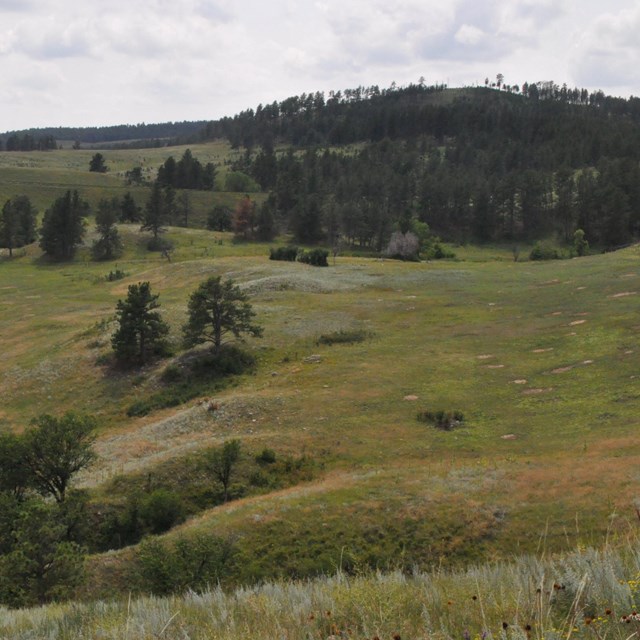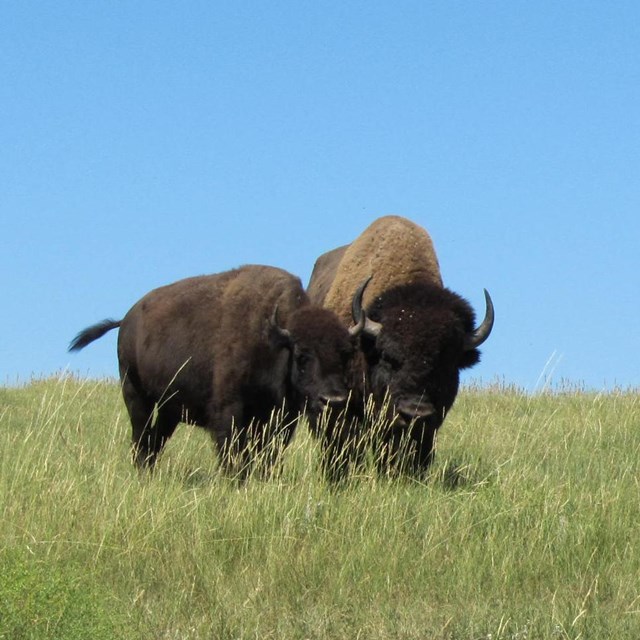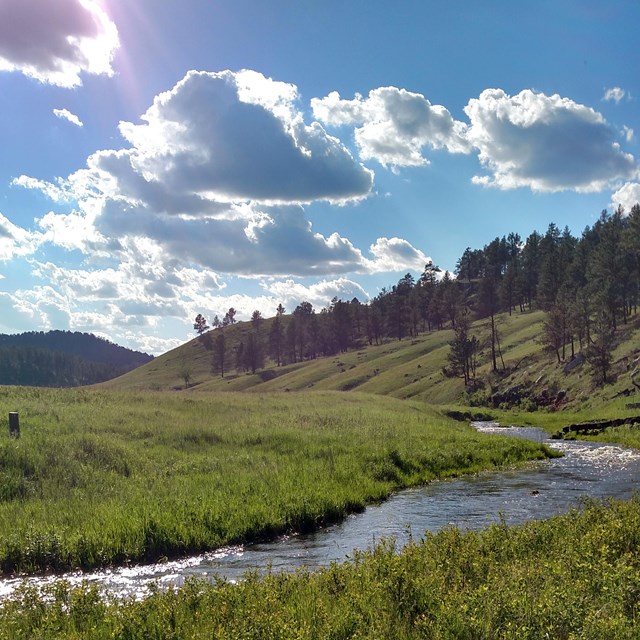
Michael Engelhart // BHNF
Visit our keyboard shortcuts docs for details
(video caption) A video about prescribed burns in Wind Cave National Park Fire plays a large role in a prairie ecosystem. It decreases amounts of dead grasses, returns nutrients to the soil, and allows for new grass to grow. All of those things provide a good habitat for prairie animals. By looking at the effects fires has on the prairie, groups of people, like the Lakota, were able to utilize it and helped the people to create hunting grounds, as well as grazing areas. Today, Wind Cave uses the same concepts by doing prescribed burns to help keep a healthy and balance prairie ecosystem. 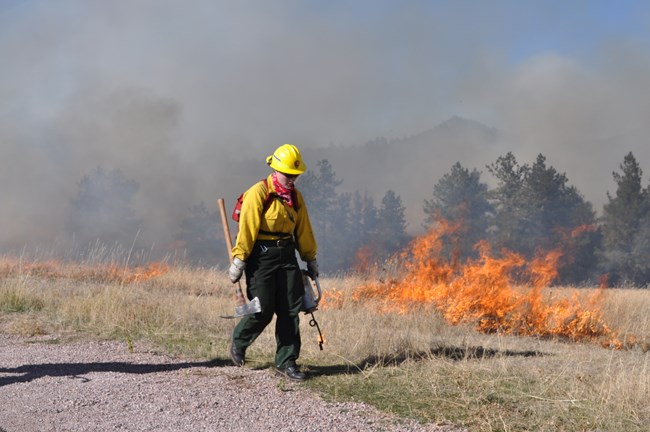
NPS Photo Renewing the PrairieFire is an important factor when it comes to having a healthy prairie ecosystem. The blackened ground left by a fire may seem uninhabitable, but fire has a symbiotic relationship with both animals and plants of the prairie. The grasses of the mixed prairie are adapted to survive a fire. When a fire moves across the prairie, it removes the build-up of dead grasses, returns nutrients to the soil, wakes up dormant plant seeds, and regenerates the prairie. When the grasses come back, they are greener, thicker, and more nutrient-rich than before the fire. The nutrient-rich grasses that grow after a fire, draw many different types of wildlife to the area including, bison, elk, pronghorn, and deer. This new vegetation provides herds with food to sustain them. Since fire naturally helps to renew the prairie, people were able to use fire in a very similar way. 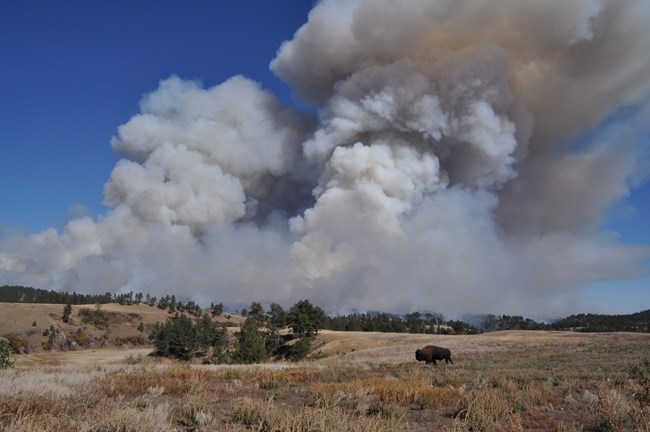
NPS Photo Using the Power of FireHistorically, fire became a useful tool to Native Americans who lived in the area. One of the main tribes in the Black Hills is the Lakota. The Lakota used fire to manage or manipulate the local environment as part of survival. They used fire to clear camp sites of brush and tall grasses, allowing the camp to be more protected from wild fires and remove cover that an enemy could use to sneak up on them. Burning of the prairie improved the grazing for horses and helped to propagate medicinal plants. Fire was also important for their food sources, such as the bison. The bison herds could be manipulated with fire. By burning an area in the fall, the bison could be excluded from that area by removing any forage that could be used by the bison during the winter months. This forced the bison to graze in unburned areas. These could be areas closer to ideal winter camp sites and could help improve hunting success. In the spring, the same areas burnt in the fall would have excellent grazing and provide good hunting opportunities. Today, the Lakota people living in the Black Hills may not use fire in the same way, but still utilize it. However, the National Park Service does use fire to manage the prairie. 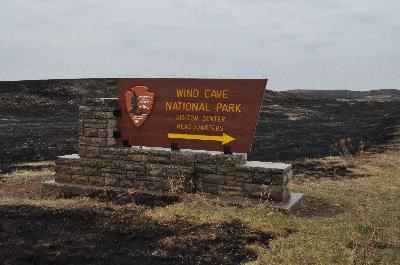
NPS Photo A Continued RelationshipThe National Park Service has continued to use fire to keep a healthy and balanced ecosystem within Wind Cave National Park. The fire management policy at Wind Cave prior to 1973 was total suppression of all fires in the park. Starting in 1973, small experimental test burns were held to look at the effects of prescribed fire on plants and animals. It also served as a demonstration to the public that under the right conditions fire could be controlled. Since that time, Wind Cave has created a fire management plan for the park. The current fire management policy for the park is total suppression of all fires no matter what their source of ignition and the use of prescribed burns to meet current management goals. Total fire suppression is necessary because of the small size of the park. A large fire would temporally force the grazing animals onto unburned areas and the overgrazing that might result could have a negative impact on the plants. Wind Cave uses prescribed fires to achieve a more "natural" state within the park. The three primary goals of prescribed fire are reduction of accumulated fuel levels, reduction of ponderosa pine encroachment on the grasslands, and the elimination of exotic plants and increasing the diversity and health of native plant species. Currently, the park strives to have prescribed burns in the spring and fall because of lower temperatures and higher moisture levels at those times. Fire is a highly effective tool that can be used to manage and maintain the natural balance and health that once existed at Wind Cave National Park. A fire comparison
Left image
Right image
More About Fire and Controlling Invasive PlantsLearn more
|
Last updated: September 5, 2023

